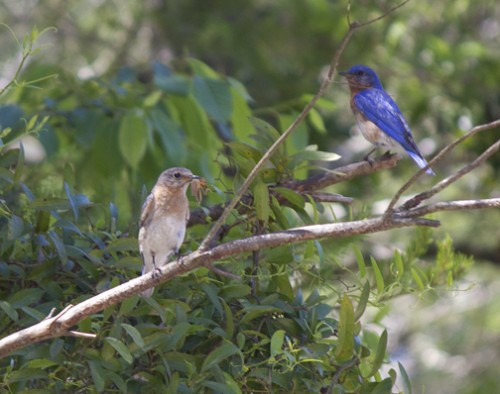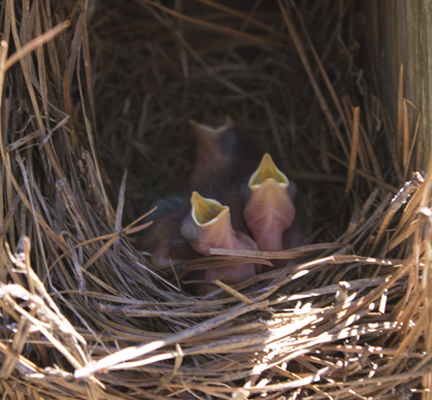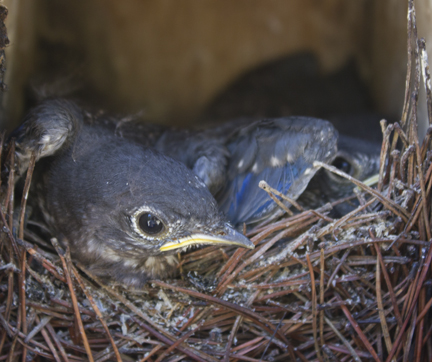
At Hammock Bay in Freeport, there is much aflutter this spring as beautiful bluebirds can be spotted everywhere. As part of a bluebird breeding program maintained by naturalist Joe Wyatt, Hammock Bay has 65 bluebird boxes scattered across their neighborhoods. This spring, the boxes have a 98 percent occupancy rate.
This is the eighth year Wyatt has been running the bluebird breeding program. The success has been quite good with close to 300 fledglings each year.

Cool Facts about bluebirds:
• It takes 14 days to incubate, and 17 days to fledgling after hatching.
• The male Eastern Bluebird displays at his nest cavity to attract a female. He brings nest material to the hole, goes in and out, and waves his wings while perched above it. That is pretty much his contribution to nest building; only the female Eastern Bluebird builds the nest and incubates the eggs.

• Eastern Bluebirds typically have more than one successful brood per year. Young produced in early nests usually leave their parents in summer, but young from later nests frequently stay with their parents over the winter.
• Eastern Bluebirds occur across eastern North America and south as far as Nicaragua. Birds that live farther north and in the west of the range tend to lay more eggs than eastern and southern birds.

• Eastern Bluebirds eat mostly insects, wild fruit and berries. Occasionally, Eastern Bluebirds have also been observed capturing and eating larger prey items such as shrews, salamanders, snakes, lizards and tree frogs.
• The oldest recorded Eastern Bluebird was 10 years 5 months old.
Information courtesy allaboutbirds.org
